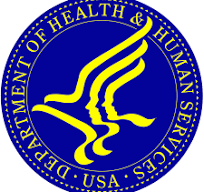The death of any child is a tragedy – for the family and for the community. Everybody wants to prevent childhood deaths. Making policy interventions to prevent childhood deaths requires information in order to develop effective policy interventions. That’s where the Arizona Child Fatality Review State Team comes in.
More than 25 years ago the state legislature passed a law establishing the Arizona Child Fatality Review Program (A.R.S. § 36-342, 36-3501-4). It’s a great example of establishing public policy designed to build data and evidence so policy makers can use evidence to build future interventions.
The State Team includes representatives from the Academy of Pediatrics and from the ADES Divisions of Developmental Disabilities and Children and Family Services, as well as from law enforcement and the ADHS. The team’s role is to review all childhood deaths in AZ and produce an annual report to the Governor and legislature with a summary of findings and recommendations based on promising and proven strategies regarding the prevention of child deaths.
The 2019 report was published last week- and as usual it provides a host of data and recommendations that are directly tied to evidence.
In past years this focus has raised the awareness about child drowning and the importance of putting babies to sleep on their backs or making sure all children are always secured in car seats. Those interventions have made a real difference- and Sudden Unexpected Infant Deaths (SUID) decreased 29% from 2017 (n=84) to 2018 (n=60) and accounted for 7% of all child deaths in Arizona.
The 2019 report sets off the public health alarm bells when it comes to child suicide.
There was a 28% increase in suicide deaths from the previous year (which itself had a 32% increase over the year previous)… so child suicide deaths have gone up about 50% in the last 2 years. 64 kids died by suicide in 2018. About 40% of the suicides were from a firearm. Over the last six years, the child suicide mortality rate has gone up more than 100% going from 1.5/100,000 in 2012 to 3.9/100,000 in 2018.
Here are the Suicide Prevention Recommendations from the Report
-
Support funding and training to schools, communities, clinical and behavioral health services providers on the prevention of suicide.
-
Educate parents, teachers, and caregivers on the risk factors for suicide. These factors include substance use, delinquency, depression and poor impulse control.
-
Provide information for educators, parents and caregivers on how to seek help for children at risk after the first red flag.
-
Continue to expand and enforce anti-bullying policies in schools.
-
Expand resources for teens that are likely to be mourning the suicide death of a friend or family member.
-
Strengthen services available to children and adolescents that address adverse childhood experiences and practice trauma informed care.
-
Completely remove firearms from homes where individuals are experiencing mental health problems such as, depression, substance use, or suicidal ideation.
-
Urge parents to monitor their child’s social media for any talk about suicide and take immediate action if there is evidence of suicidal ideation.
-
Encourage social media organizations to develop opportunities to flag information that might indicate suicidal thinking and respond with crisis information resources.
-
Support funding and access for quality behavioral health and substance use assessment and treatment services for youth and their families, especially in rural communities.
-
Promote and expand universal screening for suicide risk by all health care providers at each visit.
-
Store all medications in a locked cabinet and discard unused medications safely and properly when they are no longer being taken.
Here are some of the results in the other categories of child fatalities:
-
Sudden Unexpected Infant Deaths (SUID) decreased 29% from 2017 (n=84) to 2018 (n=60) and accounted for 7% of all child deaths in Arizona.
-
Deaths from prematurity increased 24% from 2017 (n=180) to 2018 (n=224).
-
Accidental injury deaths decreased 9% from 2017 (n=187) to 2018 (n=170) and comprised 20% of all child deaths.
-
The number of firearm deaths was unchanged from 2017 (n=43) to 2018 (n=43) and accounted for 5% of all child deaths.
-
Child fatalities due to abuse/neglect decreased 5% from 2017 (n=79) to 2018 (n=75) and accounted for 9% of all child deaths in Arizona.
-
Motor vehicle crash (MVC) deaths increased 13% from 2017 (n= 65) to 2018 (n= 74) and accounted for 9% of all child deaths in 2018.
-
Homicides decreased 18% from 2017 (n=38) to 2018 (n=31) and accounted for 4% of all child deaths.
-
Drowning deaths decreased 20% from 2017 (n=35) to 2018 (n=28) and accounted for 3% of all child deaths.
The full report covers each of these areas including some recommendations for policy and program interventions in each area. Sometimes the recommendations are more related to increasing awareness but many are more policy based.
Lots of work went into this report- so if you’re somebody in a position to influence either lawmakers or agency officials to implement preventative policies in these areas- please get familiar with this important research product – it will really help inform your advocacy efforts.
